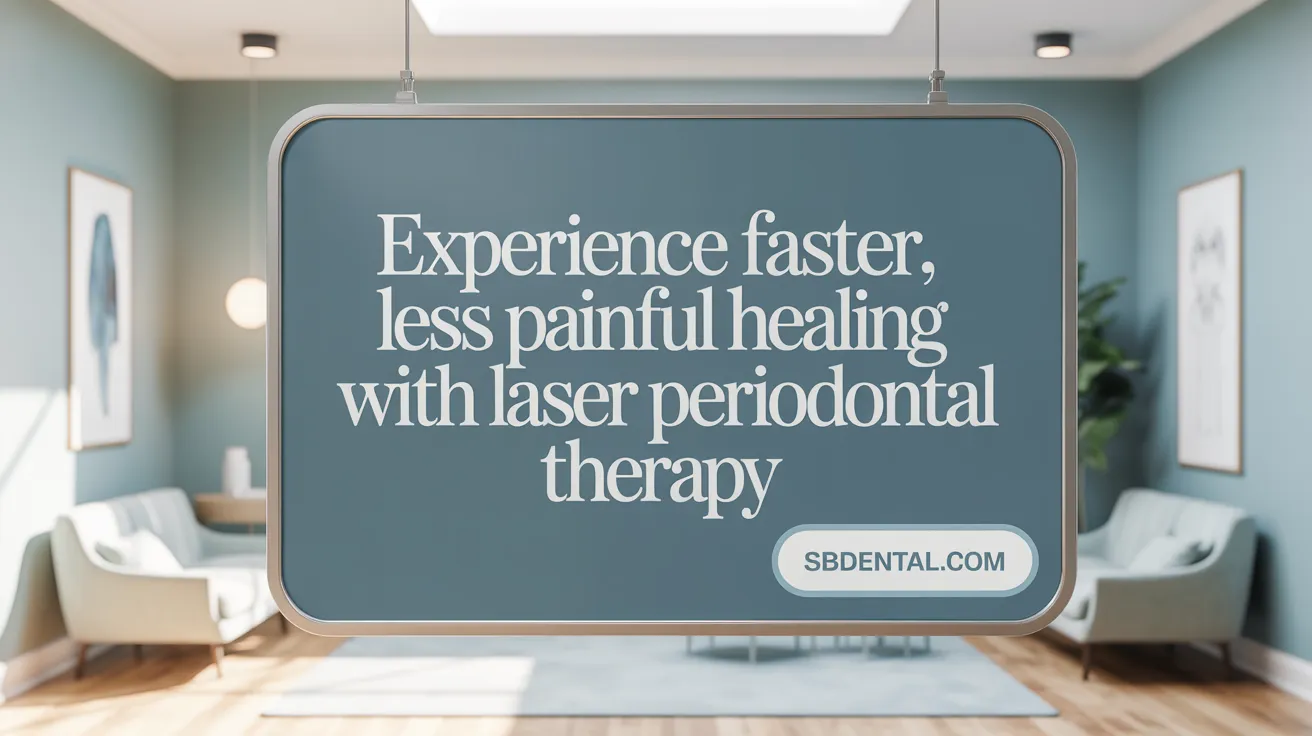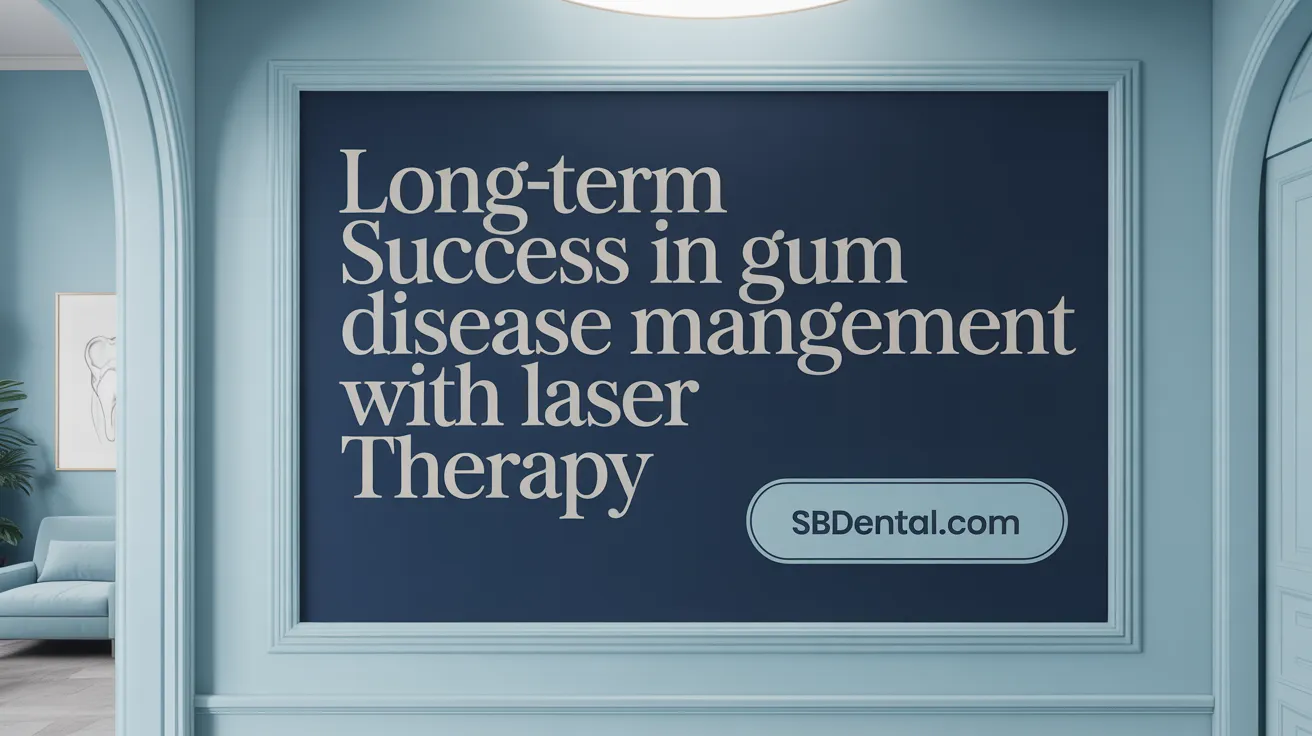Introduction to Laser Periodontal Therapy
Laser periodontal therapy represents a cutting-edge approach in the management of gum disease, utilizing advanced laser technology to treat infected gum tissue efficiently and with minimal discomfort. This less-invasive treatment offers patients a modern alternative to conventional gum surgery, focusing on precision, quicker recovery, and preservation of healthy tissue. As gum disease affects a significant portion of adults globally, understanding the benefits and what to expect from laser periodontal therapy is crucial for those seeking effective dental care solutions.
Understanding Laser Periodontal Therapy and Its Advantages
What is laser periodontal therapy and how does it work?
Laser periodontal therapy is a minimally invasive dental procedure using specialized dental lasers like Er:YAG and Nd:YAG lasers to treat gum disease. These FDA-approved lasers for periodontal treatment precisely target and remove infected gum tissue and harmful bacteria in affected pockets, while preserving healthy tissue. This selective removal mitigates infection and promotes natural healing, helping prevent further disease progression and bone loss.
How does laser therapy compare to traditional gum surgery?
Traditional gum surgery typically involves cutting gums with scalpels, incisions, and sutures, causing more bleeding, swelling, and pain. Laser therapy, in contrast, is less invasive and cauterizes blood vessels during treatment, substantially reducing bleeding and post-operative discomfort. Due to its precision, laser treatment preserves surrounding healthy gum and bone tissue, promoting regeneration where possible.
What benefits does laser periodontal therapy provide?
- Less bleeding and swelling: Laser cauterization minimizes bleeding and reduces inflammation.
- Reduced pain: Patients experience less discomfort both during and after the procedure.
- Faster recovery: Most patients return to normal activities within one to two days without general anesthesia.
- Preservation of healthy tissues: The laser only removes diseased tissue, helping maintain gum height and stimulate bone regeneration.
How does laser therapy preserve healthy tissue and promote regeneration?
Laser energy selectively destroys diseased, pigmented tissue while sparing healthy areas. This encourages gum tissue reattachment to tooth roots and stimulates new bone growth, outcomes not achievable with conventional methods. Techniques like the Laser-Assisted New Attachment Procedure (LANAP) utilize lasers to promote these regenerative effects effectively.
In summary, laser periodontal therapy offers a precise, less painful, and faster-healing alternative to traditional gum surgery, combining FDA-approved laser technologies to enhance periodontal health while preserving and regenerating key oral tissues.
The LANAP Protocol: A Specialized Laser Treatment for Gum Disease

What is LANAP and what makes it unique?
LANAP, or Laser-Assisted New Attachment Procedure, is a cutting-edge laser periodontal therapy specifically designed to treat moderate to severe periodontal disease. It is unique because it uses the PerioLase MVP-7 Nd:YAG laser, which selectively targets and removes diseased gum tissue and harmful bacteria while preserving healthy gums. This precision helps promote natural tissue reattachment and stimulates bone regeneration, differentiating it from traditional gum surgery that typically involves cutting, sutures, and longer healing times.
How does LANAP promote tissue reattachment and bone regeneration?
The Nd:YAG laser used in LANAP focuses energy on infected areas to eradicate bacteria and diseased tissue without harming healthy structures. This selective removal allows the body’s natural healing processes to encourage new connective tissue attachment and bone growth around the tooth roots, which can potentially reverse some effects of gum disease. Scientific studies dating back to 2007 support these regenerative benefits, making LANAP a scientifically backed option.
What are the specifics of the LANAP procedure?
The procedure is performed with the PerioLase MVP-7 laser, the only dental laser FDA-cleared for periodontal regeneration. It involves inserting a laser fiber approximately the width of three hairs between the gum and tooth to clean the pocket thoroughly. After laser treatment, ultrasonic instruments remove tartar from the root surfaces. The laser also cauterizes the treated area immediately, minimizing bleeding and swelling. Typically completed over two appointments lasting about two hours each, LANAP requires only local anesthesia and allows for a comfortable treatment experience.
Who is an ideal candidate for LANAP?
LANAP is especially suitable for patients suffering from moderate to advanced periodontal disease who prefer a less invasive treatment option. It is also ideal for individuals with medical conditions that complicate traditional surgery or for those on blood thinners and other medications, as it minimizes bleeding and does not require discontinuation of such drugs. Patients seeking a procedure with less pain, quicker recovery, and reduced risk of complications find LANAP beneficial.
What can patients expect during and after treatment?
Patients typically experience minimal discomfort during the LANAP procedure, with mild soreness or swelling afterward that generally resolves within a few days. Most return to normal activities quickly, often within 24 to 48 hours. The treatment results in less bleeding, swelling, and gum recession compared to conventional surgery, and long-term patient stability has been demonstrated, with approximately 98% of treated individuals maintaining gum health five years post-procedure.
What to Expect During and After Laser Periodontal Therapy

What happens during a laser periodontal therapy session?
Laser periodontal therapy starts with local anesthesia to numb the gums. A tiny laser fiber is inserted between the gum and tooth to precisely remove diseased and inflamed tissue while sterilizing the infected periodontal pocket. This laser energy selectively targets harmful bacteria, reducing infection risk. Following laser treatment, ultrasonic instruments are often used to clean tartar from the root surfaces. The laser then coagulates the tissue, sealing the area and minimizing bleeding.
Typical procedure duration
Most laser periodontal therapy sessions last between one and two hours, depending on the extent of gum disease and how many teeth are involved.
What should patients expect during recovery?
Recovery after laser periodontal therapy is generally rapid. Most patients experience mild gum soreness, slight discoloration, minor bleeding, or tooth sensitivity lasting a few days. Swelling tends to be minimal. Patients typically return to normal activities within 24 to 48 hours, with full healing commonly occurring within about a week.
Aftercare guidelines
After treatment, it is important to avoid brushing or flossing the treated area for a few days to allow healing. Rinsing gently with warm salt water or using prescribed mouthwash helps keep the area clean. Eating soft foods and avoiding hot, spicy, or irritating foods supports comfort. Smoking should be avoided to reduce risk of complications.
Signs of complications
Patients should watch for signs of infection such as increased pus, oozing, swelling, worsening pain, or fever. If any of these occur, contacting a dental professional promptly is advised to receive treatment such as antibiotics.
Proper aftercare and follow-up visits are essential to maximize treatment success and maintain periodontal health.
Benefits and Limitations of Laser Periodontal Therapy

What are the key benefits of laser periodontal therapy?
Laser periodontal therapy provides several significant advantages over traditional gum treatments. It precisely targets and removes diseased tissue while sparing healthy gums, which minimizes bleeding and swelling. This precision also reduces trauma and promotes faster healing, typically allowing patients to resume normal activities within a day or two.
The therapy can stimulate regeneration of gum tissue and bone, enhancing tissue reattachment and potentially reversing damage that conventional surgery cannot repair. Additionally, laser procedures usually require only local anesthesia and avoid scalpels or sutures, improving patient comfort during and after the treatment. Treatments often last around one to two hours, making appointments shorter and more convenient.
Are there any drawbacks or limitations?
Despite its benefits, laser periodontal therapy has limitations. The cost can range from $500 to $3,000 per quadrant, which may not be fully covered by insurance, making it less accessible for some patients. Availability of trained laser-certified dental professionals is also limited, as specialized training is required to safely and effectively perform these treatments.
There is no universal consensus among dental professionals that laser therapy is definitively superior to traditional methods due to mixed clinical evidence. While some studies demonstrate additional benefits, the lack of standardized treatment protocols contributes to varying results. Thus, patient suitability depends on individual health conditions and disease severity, and consultation with a qualified professional is critical to determine the best treatment approach.
Long-Term Outcomes and Patient Considerations

What are the long-term benefits of laser periodontal therapy?
Laser periodontal therapy offers significant long-term advantages by effectively reducing gum pocket depths and halting the progression of gum disease. This helps preserve the height of gum tissue, which is crucial for maintaining tooth stability and minimizing tooth sensitivity. Techniques like LANAP (Laser-Assisted New Attachment Procedure) promote tissue reattachment and even stimulate bone regeneration, supporting healthier gums and stronger teeth over time. Many patients experience lasting success, with studies showing that around 98% remain stable up to five years post-treatment, reflecting both the therapy's effectiveness and durability.
How should patients maintain results post-treatment?
Successful long-term outcomes depend heavily on ongoing care. Patients should maintain excellent daily oral hygiene habits, including brushing and flossing, supplemented by regular dental visits for professional cleanings. In some cases, adjunct treatments like prescribed antibiotics or antimicrobial mouth rinses may be recommended to support healing and prevent recurrence. Early diagnosis and intervention are critical; proactive management helps prevent disease progression and maximizes therapeutic benefits. Personalized treatment plans crafted by dental professionals guide patients through maintenance to sustain healthy gums and teeth.
Who is a good candidate and how does laser therapy fit into overall care?
Laser periodontal therapy is well-suited for patients with moderate to severe gum disease, especially those who may have systemic health issues such as diabetes or patients on blood-thinning medications. Because the procedure is minimally invasive and has a reduced risk of bleeding or infection, it provides a safer alternative for these individuals. Importantly, laser therapy complements traditional periodontal treatments by targeting bacteria and diseased tissues precisely, while preserving healthy structures. As part of a comprehensive periodontal care strategy, laser therapy supports long-term oral health, reduces treatment anxiety, and enhances patient satisfaction.
Conclusion
Laser periodontal therapy marks a transformative advancement in the treatment of gum disease by combining precision technology with patient-centered care. Offering significant benefits such as reduced discomfort, faster healing, and the potential for tissue regeneration, treatments like LANAP provide effective alternatives to traditional surgery. While cost and accessibility considerations remain, the therapy’s minimally invasive nature and strong safety profile make it an appealing option for many individuals, particularly those with moderate to severe periodontal disease. Optimal results depend on timely intervention, skilled practitioners, and a commitment to ongoing oral hygiene. As ongoing research continues to refine and validate laser techniques, laser periodontal therapy stands as a promising cornerstone in modern dental health management.
